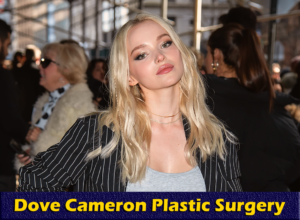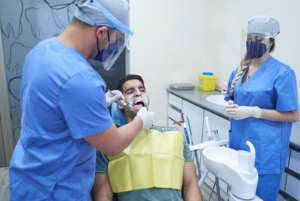
Eye surgery, whether it’s for vision correction, cataract removal, or another reason, represents a significant step toward enhanced visual acuity and quality of life. Such procedures have come a long way, offering more precision and quicker recovery times than ever before.
However, post-operative care remains crucial to ensure the success of the surgery and the health of the eyes. It’s in the days and weeks after the procedure where the real healing happens, and it’s essential to be equipped with the right knowledge.
This blog post will delve deep into the facets of post-operative eye care, from immediate aftercare, to potential complications, shielding from harmful light, and even incorporating style with function in post-operative eyewear.
Aftercare Recommendations Immediately Following Eye Surgery
When the surgery wraps up, the journey to recovery commences. It’s a critical time when the eyes are at their most vulnerable. Immediate care mostly revolves around protecting the eyes from external irritants. Often, surgeons will recommend wearing a protective shield or eye patch for several hours or even days after the procedure. This physical barrier keeps out dirt, dust, and other potential contaminants.
In addition to this barrier, maintaining a clean environment at home becomes paramount. Ensure that pillowcases and bed linens are freshly laundered to minimize the chance of infection. It’s also advised to avoid touching or rubbing the eyes, even if they feel itchy or uncomfortable. Wash hands frequently and avoid places with high exposure to dirt or pollutants, such as construction sites or polluted outdoor areas.
Another crucial aspect is to adhere to the medication schedule provided by the ophthalmologist. Typically, this involves antibiotic eye drops to prevent infections and anti-inflammatory drops to reduce inflammation and discomfort. It’s essential to follow the exact dosage and frequency, as even a minor lapse can affect recovery speed and quality.
Understanding and Spotting Complications After Eye Surgery
While complications after eye surgeries are rare, they can occur. Knowledge is power, and being aware of potential issues can lead to swift action, should they arise. Common symptoms to watch out for include persistent pain (not just discomfort), decreasing vision, increased redness, and excessive discharge.
Another potential issue is the onset of blurry vision or floaters. While temporary blurriness can be part of the healing process, any drastic or prolonged changes warrant immediate medical attention. Being proactive can make all the difference, so keeping scheduled follow-up appointments with the ophthalmologist is of utmost importance to monitor the healing progress.
For many, the sensation of having a foreign object in the eye might persist for a few days. While some discomfort is expected, if it transforms into unmanageable pain, it’s worth reaching out to a healthcare professional. Remember, it’s always better to be safe and get potential concerns checked rather than waiting and hoping for the best.
The Important Role of Light and Protective Measures
Light sensitivity is a common side effect after eye surgery. The eye, freshly operated upon, can perceive natural and artificial light sources as overly bright or even piercing. To combat this, many medical professionals recommend wearing sunglasses with complete UV protection.
But protection doesn’t have to be bland. Enter cat eye glasses – a stylish yet functional solution for those in need of prescription lenses after surgery. Their unique design, reminiscent of the 1950s and 60s, not only ensures maximum protection from sideway light but also adds a touch of vintage elegance to the wearer.
Guide to Lifestyle Adjustments for Optimal Recovery
Recovery isn’t just about medication and protective wear. It also encompasses lifestyle adjustments to provide the best environment for healing. Activities such as reading, watching TV, or using computers should be reduced initially. This reduction can help alleviate eye strain and allow the eye to rest and recover faster.
It’s also a good time to embrace audiobooks or voice-assisted technologies, which can provide entertainment or productivity without straining the eyes. Keeping rooms softly lit, rather than using harsh lights, can make a significant difference in comfort levels during recovery.
Dust and smoke can irritate the eyes, so it’s advisable to avoid smoky environments and postpone that spring cleaning. If there are smokers in the household, request them to smoke outdoors during your recovery period. Also, adding a humidifier can ensure that indoor air remains moist, providing comfort to healing eyes. Regularly changing or cleaning the filters in home air systems can further help in keeping the indoor environment pure and conducive for recovery.
Stylish Recovery: Embracing Fashion-forward Eyewear
While healing is paramount, it doesn’t mean one should sideline style. As we move further into recovery, many will need to update their prescription eyewear. The variety of styles available today, including the timeless cat eye glasses, means there’s no compromise on fashion. Not only do these glasses provide the necessary vision correction, but they also introduce an element of chic to the post-operative phase.
Guided Path: Merging Post-Operative Care with Style
The odyssey of eye surgery leads to a brighter, clearer future. Navigating this journey demands diligence, awareness, and a touch of flair. While the emphasis is rightly on health and optimal recovery, introducing elements of style, like the cat eye glasses, can uplift our spirits. Merging medical precautions with individual expression not only enhances the healing process but also reminds us of the joys of everyday life. With informed choices and a dash of elegance, the post-operative journey becomes not just a path to recovery but also one of rediscovery.








